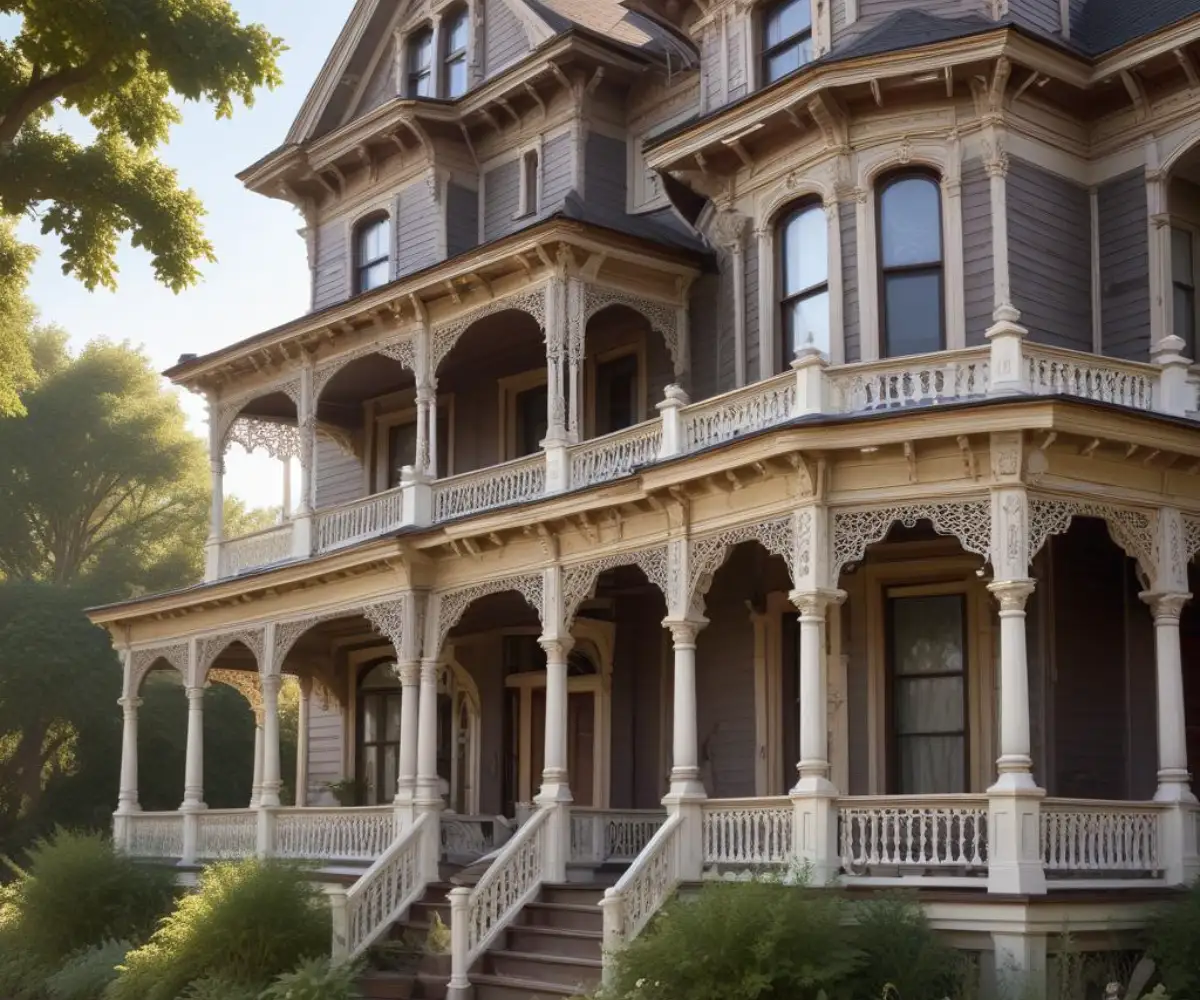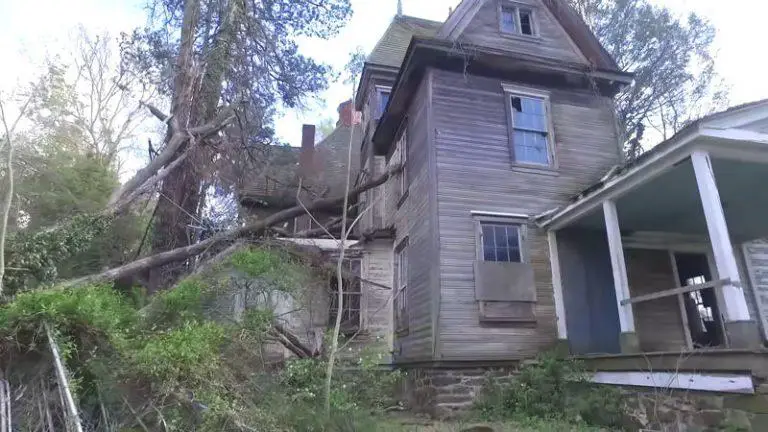Should You Buy an 1800s House? Avoid These Nightmares
The allure is undeniable. A house built in the 1800s offers a tangible connection to the past, boasting unique architectural details, handcrafted quality, and a character that modern construction often lacks. For many, owning a piece of history is the ultimate dream.
However, this dream can quickly sour into a financial and structural nightmare. Behind the charming facade of a 19th-century home often lurk expensive, complex, and dangerous problems that can catch unprepared buyers completely off guard. This guide is designed to arm you with the critical knowledge needed to navigate this unique real estate journey, ensuring your historic house becomes a cherished home, not a costly mistake.
You'll Learn About
The Irresistible Charm vs. The Hidden Dangers of 19th-Century Homes
It’s easy to fall in love with the high ceilings, original hardwood floors, and intricate woodwork common in homes from the 1800s. These properties were often built with old-growth timber, a material far denser and more durable than the farmed lumber used today. The sense of permanence and craftsmanship is a powerful draw for those seeking something beyond the cookie-cutter suburbs.
Yet, the very age that gives these homes their character is also the source of their greatest risks. Building standards of the 19th century were primitive compared to modern codes. This means you could be facing issues ranging from crumbling foundations and hazardous materials to completely outdated and dangerous utility systems that require a total overhaul.
The Critical First Step: Assembling Your Historic Home A-Team
Before you even think about making an offer, your first investment should be in the right team of experts. A standard home inspector is not enough. While skilled at evaluating modern homes, they often lack the specialized knowledge to identify the unique and subtle issues present in a 200-year-old structure.
Finding a Historic Home Specialist Inspector
You need an inspector with proven experience in historic properties. When vetting candidates, ask them about their familiarity with 19th-century construction methods like timber framing, fieldstone foundations, and outdated wiring. They should be prepared to spend significantly more time on the inspection than they would in a newer home.
The Importance of a Structural Engineer
Alongside a specialized inspector, a structural engineer is a non-negotiable part of your team. They can assess the integrity of the home’s core components, such as the foundation, load-bearing walls, and floor joists. Signs that seem minor to the untrained eye, like a sloping floor or a crack in the plaster, could indicate a severe structural issue that an engineer can properly diagnose.
Specialized Contractors
It is also wise to have specialized tradespeople on call. An experienced electrician can identify the dangers of old wiring, while a plumber who has worked on historic homes can spot the tell-tale signs of failing cast iron or lead pipes. Their expert opinions are invaluable during the inspection period.
Uncovering the Bones: Key Structural Issues in 1800s Houses
The very structure of a 19th-century house is fundamentally different from a modern one. Understanding these differences is key to identifying potential disasters before you buy.
Foundation Failures: From Fieldstone to Brick
Many homes from this era were built on foundations of fieldstone or soft, early forms of brick held together with lime-based mortar. Over time, this mortar can crumble and turn to sand, allowing moisture and pests to enter the basement. Look for signs of repointing, where new mortar has been applied, and be wary of any walls that are bowing inward, as this could signal a catastrophic failure.
Water management is another critical issue. These foundations were not designed with modern waterproofing in mind, making them susceptible to moisture intrusion that can lead to mold, rot, and further deterioration of the foundation itself. Proper grading and exterior drainage are essential to protect the home’s base.
Timber Frame Troubles
The heavy timbers that frame many 1800s houses are remarkably strong, but they are not invincible. Wood-boring insects like powderpost beetles and termites can cause immense damage that is often hidden behind plaster walls. Look for small holes in the wood or fine sawdust (known as frass) on the floor of the basement or attic.
Wood rot from prolonged moisture exposure is another significant threat. Pay close attention to the sill plate—the main timber that rests on top of the foundation—as this is a common area for rot to take hold. A compromised sill plate can jeopardize the entire structure above it.
The Roof Over Your Head: An Old Home’s Crown
The roof of a historic home can be both a stunning feature and a major liability. Original materials like slate are incredibly durable but are also brittle and expensive to repair. Years of neglect can lead to multiple layers of asphalt shingles being piled on top of the original roof, adding immense weight that the structure was not designed to support.
From the attic, look for sagging in the roof ridge or rafters, which could indicate structural strain. The complex rooflines of Victorian-era homes, with their many gables and valleys, create more opportunities for leaks. Knowing how to hang lights on a steep roof might seem like a minor concern, but it speaks to the broader challenges of maintaining these complex structures.
Decoding the Systems: When Antique Isn’t Chic
While the structure of an old house can hide problems, the internal systems—electrical, plumbing, and HVAC—are often where the most immediate dangers and expenses lie.

Electrical Nightmares: Knob-and-Tube Wiring
If the house still has active knob-and-tube wiring, you must budget for a complete rewire. This early form of electrical wiring is a significant fire hazard, as it lacks a ground wire and its insulation can become brittle and fail over time. Many insurance companies will refuse to cover a home with knob-and-tube wiring, making it a critical issue to address immediately.
Plumbing Predicaments: From Lead to Galvanized Steel
The plumbing in a 19th-century home could be a cocktail of different materials added over the decades. Original lead supply pipes pose a serious health risk and must be replaced. Galvanized steel pipes, common in the early 20th century, corrode from the inside out, leading to low water pressure and eventual leaks.
Cast iron drain pipes are also prone to cracking and root intrusion over their long lifespan. A sewer scope—sending a camera down the main drain line—is an essential part of the inspection process to identify any breaks or blockages before they become a major backup.
Hazardous Materials: The Unseen Threats
Homes built before 1978 are presumed to contain lead-based paint. When this paint chips or is disturbed during renovation, it creates toxic dust that is especially dangerous to children. Asbestos was also a common material used for insulating pipes, boilers, and in some types of flooring and siding. Professional abatement for both lead and asbestos is costly but necessary for a safe living environment.
The Financial Realities: Budgeting Beyond the Purchase Price
The purchase price of an 1800s house is just the beginning. The true cost of ownership involves higher expenses across the board, from insurance and taxes to the inevitably higher cost of repairs and renovations.
Securing a Mortgage and Insurance
Lenders and insurers can be wary of historic homes. An underwriter may require proof that outdated systems like wiring have been updated before approving a loan. Insurance premiums are almost always higher due to the increased risk of issues like fire and the higher cost to replace historic features. Some companies may not offer coverage at all if certain conditions aren’t met.
Renovation & Restoration Costs
Everything costs more when working on a historic home. From finding a craftsman who can repair plaster walls to sourcing period-appropriate hardware, the materials and labor are specialized and expensive. The table below illustrates how quickly costs can escalate compared to a modern home.
| Repair/Upgrade | Estimated Cost in Modern Home | Estimated Cost in 1800s Home |
|---|---|---|
| Complete Electrical Rewire (2,000 sq ft) | $8,000 – $15,000 | $15,000 – $30,000+ |
| Replace 10 Windows | $7,000 – $12,000 (Vinyl) | $20,000 – $40,000 (Custom Wood) |
| Exterior Painting (2,500 sq ft) | $5,000 – $9,000 | $10,000 – $25,000 (Includes lead paint prep) |
| Foundation Repair (Minor) | $3,000 – $7,000 | $10,000 – $20,000 (Specialized masonry) |
| Roof Replacement (Asphalt) | $8,000 – $15,000 | $25,000 – $75,000+ (Slate or specialty) |
Navigating Historic District Rules and Regulations
If the house is located in a designated historic district, you will face another layer of complexity. Local preservation commissions often have strict rules governing any exterior modifications. You cannot simply replace old windows with modern vinyl ones.
These regulations can dictate everything from paint colors to the style of your front door. Any planned changes will likely require an application and approval from the commission, a process that can add time and expense to your projects. The goal is to preserve the historic character of the neighborhood, which means your role is as much a steward of the property as it is an owner.
The “Originality” Factor: What Most Overlook
Beyond the common structural and systemic checks, living in and understanding an 1800s home requires a different kind of awareness. These houses have quirks and behaviors that are foreign to modern homeowners, and interpreting them correctly is crucial.
Beyond the Obvious: Listening to the House
Old houses settle, groan, and make noises. While some are harmless, others can be warnings. For instance, a persistent chirping noise in the house that’s not a smoke detector could be a sign of pests in the walls or a loose piece of hardware reacting to temperature changes. It is vital to investigate these subtle clues rather than dismiss them.
Understanding 19th-Century Airflow
These homes were built to breathe. They lacked modern insulation and vapor barriers, instead relying on natural airflow through walls and windows to manage moisture. A common mistake is to seal these homes up too tightly with modern spray foam insulation and new windows. This can trap moisture inside the wall cavities, leading to widespread rot and mold where none existed before.
Hidden Environmental Hazards
The land the house sits on may also hold historical hazards. Buried oil tanks from early heating systems can leak and contaminate the soil, requiring expensive environmental remediation. Furthermore, these homes were built without knowledge of issues like radon, a naturally occurring radioactive gas. It’s important to consider a radon mitigation system without a sump pump if your home has a dirt or fieldstone basement where a traditional system is not feasible.
Conclusion: Is an 1800s House Right for You?
Buying a house built in the 1800s is not for the faint of heart or the light of wallet. It demands a deep appreciation for history, a significant budget for both expected and unexpected repairs, and a willingness to become a patient steward rather than a mere owner.
By assembling the right team of experts, conducting exhaustive inspections, and entering the process with a realistic understanding of the potential costs and challenges, you can avoid the common nightmares. For the right person, the reward is a truly unique home, rich with history and character, that will stand for generations to come.

